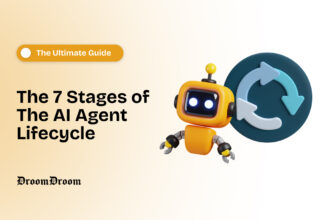Non-fungible tokens (NFTs) allow people to buy and sell ownership of unique digital items. One growing use of NFTs is for NFT Virtual Land in metaverses. A metaverse is a shared virtual world where people can interact through avatars. Major tech companies are creating metaverse platforms where people can play games, attend events, and buy goods and services for their avatars.
NFT Virtual Land allow people to buy digital real estate in metaverse worlds. Land owners can develop property or rent space just like physical land, opening new revenue streams from the growing digital economy and user base entering these virtual spaces.
NFT Virtual Land is a scarce digital resource in the metaverse world, just like in the real world. Companies are dividing the metaverse into land parcels and selling them as NFTs. Owning one of these NFTs confers ownership of that spot of virtual land. The idea is that virtual land near popular locations will rise in value, just as in physical reality.
Virtual land NFTs in metaverses like Decentraland or The Sandbox routinely sell for thousands or even millions of dollars. Over 140,000 token plots have been sold across different metaverse worlds in 2023. As the metaverse grows more mainstream, demand for prime spots will boom even further. Savvy early adopters are buying up land, developing it with virtual buildings and attractions, and eventually selling or renting the land out.
What Is NFT Virtual Land?
NFT Virtual Land is a digital property that people can buy and sell online. It does not exist in the real world; it exists only on computers and in virtual worlds. People purchase vacant land parcels mapped out inside virtual worlds and games. Then, they own that digital land just like owning physical land. The ownership gets recorded on a blockchain, which is the technology behind things called NFTs. These non-fungible tokens confirm someone’s ownership of a one-of-a-kind digital item.
NFT Virtual Land sales allow gaming worlds to mint unique land tokens on blockchains. When people obtain these special digital tokens, they gain ownership of virtual land plots living inside virtual worlds. Their certificate of ownership traces back to the NFT and is permanently logged on an unchangeable distributed ledger.
The Rise of NFTs and Their Expansion into Virtual Land
The adoption of NFT Virtual Land is rising these days among gamers. In early 2023, sales of digital land in metaverse worlds hit new heights. In the first few months, the total value of virtual land deals jumped over 275% compared to the previous year. By March, people had traded land worth more than $310 million in these online spaces.
The number of land sales also set a new record high. Almost 150,000 changed hands in the first quarter alone. Driving this surge was strong interest in Otherdeed for Otherside. It became the hottest virtual world, with over $220 million of land bought and sold.
How Does NFT Virtual Land Work?
Acquiring Virtual Land
You can get NFT Virtual Land in a couple of main ways:
- Participating in land sales run by metaverse projects where they auction or sell plots of virtual land
- Buying land on secondary NFT marketplaces like OpenSea from other users
- These secondary markets work like stock or crypto exchanges, allowing people to trade ownership of the NFT land parcels.
Owning Land with NFTs
The NFT token itself represents legal ownership over that plot of virtual land. The NFT contains unique identifying codes that are registered on the blockchain.
This allows the blockchain to keep an unchangeable public record of who owns what land. Even if you buy the land secondhand, the NFT and blockchain still track ownership.
So NFTs give you verified digital ownership that is transparent and secure. It’s like a digital deed proving the virtual land is yours. This allows real ownership and transactions of digital real estate and assets.
The Relationship Between NFT Virtual Land and the Metaverse
The metaverse means a wide-reaching digital world where people can connect. It mixes parts of real life with online life to make a rich experience. People can do various things together in the metaverse, like meet up, play games, see entertainment, learn, shop, and more. It blurs the line between what’s physical and what’s digital to open up new ways for people to get creative and link up.
NFT Land in the Metaverse
NFT Virtual Land in the metaverse works a lot like having actual land. People can get blockchain-based ownership of digital land parcels by buying NFTs. Landowners decide how to shape their plots by making experiences, hosting events for brands, starting virtual businesses, or showcasing art.
So, NFT virtual land takes the idea of physical property and brings it into the digital space. Land in the metaverse empowers people to make their digital lives their own. It sparks entrepreneurship and creativity by letting people build their vision.
Bridging Real and Digital
With the ability to own virtual land through NFTs, users can now bridge real and digital in new ways. Digital land marries the physical feeling of having your own space with the boundless potential of virtual worlds. This blend is what makes the metaverse different from old-school virtual spaces. And it’s why digital land is seen as so valuable.
NFT Virtual Land is an integral piece of open digital worlds. It lets people take charge of crafting immersive environments that can do business, entertain, or educate. So, digital land ownership directly shapes the emerging metaverse itself. The ties between NFT virtual land and the growth of shared, lively digital spaces will only deepen as tech improves.
Factors Affecting the Value of NFT Virtual Land
What can you actually do there? If the land lets people build cool spaces to hang out, host events, show art or ads, or work and make money, then more people want it. More uses and chances to profit mean higher prices. A few big things matter most.
Utility within the Metaverse Ecosystem
The usefulness and function of the virtual land are big things to consider when looking at its value. Some key stuff:
- NFT Virtual Land that gives unique experiences – like hosting events, art shows, or interactive games – tends to be more wanted and costs more.
- Locations that are strategic in the virtual world, like being in a main hub or near popular attractions, can be worth more because of the possible visitors and interactions.
Popularity of the Hosting Platform
The platform where the virtual land is can also change what it’s worth. Here’s why:
- Well-known metaverse platforms with lots of users and good development tend to drive up demand for their virtual land.
- Platforms known for active communities and innovative experiences can make their virtual real estate more wanted, raising value.
Speculation and Market Trends
Like with real-world real estate, speculation can impact the value of virtual land NFTs. Good to know:
- Trends, celebrity backing, and brand investments can hype certain spots, quickly changing values.
- Staying up on emerging sentiments and trends is key for navigating well.
- Looking at all these driving factors gives valuable input into the worth of virtual land NFTs in the growing metaverse. This understanding helps make decisions on investing, creating, and exploring.
The ups and downs of virtual real estate are still new. According to DappRadar, the metaverse land rush has been going strong this year. Trading volume skyrocketed by over 277% compared to last quarter, crossing the $311 million total. Since the crypto crash last Spring, 2023’s Q1 marked the highest activity for virtual worlds. Over 140,000 token plots changed hands, an 83% jump.
The Role of Blockchain Technology in Establishing Digital Ownership within the Metaverse
Blockchain record-keeping can verify who rightfully owns virtual stuff in metaverse worlds. Here’s how:
Verifying Authenticity and Provenance
Blockchain ledgers confidently check whether non-fungible tokens uniquely match pieces of virtual land. This stops copying and faking.
Facilitating Peer-to-Peer Transactions
The blockchain allows buyer-to-seller sales of virtual assets without middlemen. This streamlines things.
Smart Contracts
Smart contracts automatically transfer digital ownership when set conditions occur. For example, after a virtual land sale happens. This adds security without needing trust.
Additionally, blockchain identities prove users own virtual goods. Blockchain transactions also enable virtual economies while stopping cheating and unauthorized copying.
As the metaverse expands, the blockchain will become even more key for setting up how digital ownership works. Its ability to securely verify ownership will be crucial for growing virtual land markets and other metaverse economic activity.
Popular Projects Revolutionizing NFT Virtual Landscapes
NFT virtual land projects are redefining how people interact in digital spaces and present exciting economic opportunities. Three major platforms leading the way are Decentraland, The Sandbox, and Axie Infinity.
Decentraland: Exploring a User-Powered Metaverse

Decentraland enables users to buy, develop, and monetize virtual land while interacting with others.
Key Features Include
- User-driven economy
- Creative freedom to build unique experiences
- Rich social interactions
Decentraland is pioneering a decentralized metaverse shaped by those who participate in it.
The Sandbox: Voxel Building and Play-to-Earn Gaming

The Sandbox utilizes NFTs and cryptocurrency to let users create voxel-based assets and get rewarded for gaming experiences.
Standout Elements Include
- Intuitive voxel editor optimized for creativity
- The play-to-earn model that incentivizes participation
- Partnerships bringing popular brands into the metaverse
By merging accessible creation tools and monetization, The Sandbox has engaged creators and players.
Axie Infinity: Collecting and Battling Digital Creatures

Axie Infinity leverages NFT creatures called Axies to enable ownership within a dynamic gaming metaverse.
Key Highlights
- Virtual land ownership and development opportunities
- Play-to-earn gaming model with multiple income streams
- Community-driven governance over ecosystem evolution
Axie Infinity’s success demonstrates the demand for true digital ownership and enjoyable gameplay. As these projects demonstrate, NFT virtual worlds present fresh opportunities for expression, socialization, and making a living. The possibilities seem endless as the metaverse grows.
The Future of NFT Virtual Land and Its Impact on Digital Ownership
Virtual land based on NFTs has exploded in popularity recently, with some plots selling for outrageous sums. The appeal lies in creating unique digital spaces that users can monetize. Imagine building anything you want – games, art galleries, shops, meeting halls. Projects like Decentraland, Next Earth, and Earth 2 let people buy virtual land mapped to real-world coordinates.
When someone buys an NFT land plot, they gain certain rights over that space. But the NFT platform leaders still make the main rules. Conflicts might happen if a platform changes terms after people buy land plots. Users may ask whether we own this space if others govern it.
In the future, virtual worlds will feel more real with AR and VR. Digital land and items will gain more meaning as people spend more time in these spaces. But laws and norms around digital ownership are still up in the air. New rules must balance user rights with community needs as virtual worlds grow. The impact on ownership in both physical and digital realms could be profound.
Conclusion
Virtual land in the metaverse ushers in a new paradigm for ownership and community within digital spaces. NFTs enable transparent transactions and record-keeping to establish digital property rights. As the market matures, virtual real estate presents opportunities to create, invest, and connect. Underlying blockchain architecture drives innovation for interactions in this evolving landscape. The possibilities for individual expression and business presence in the metaverse grow broader each day.
















